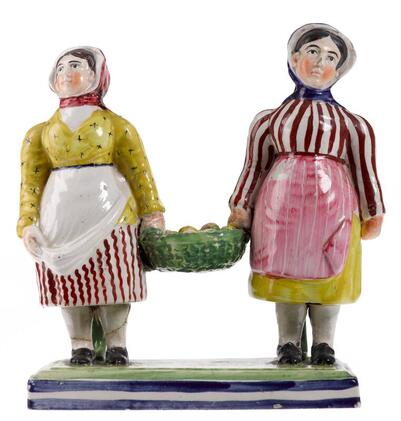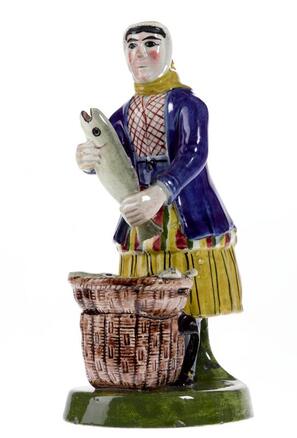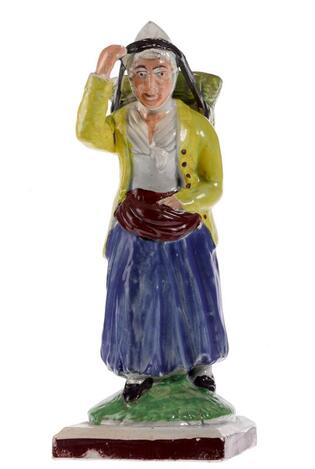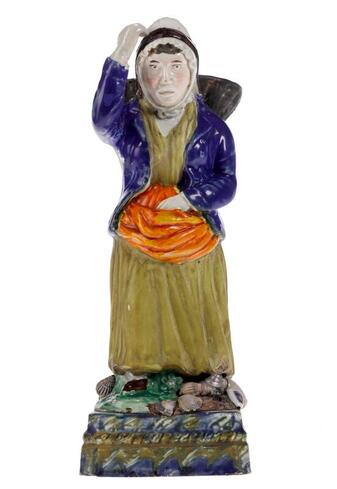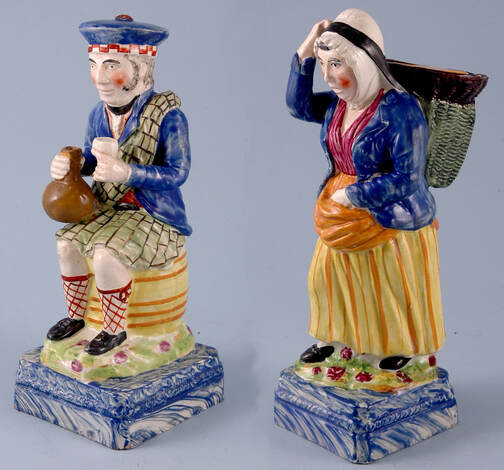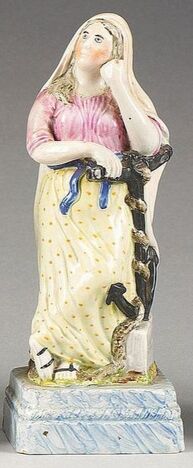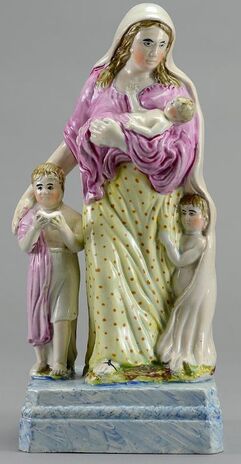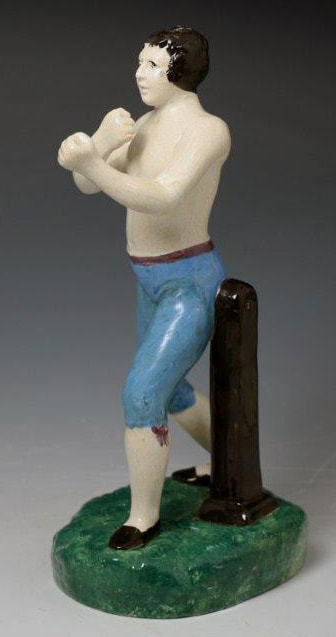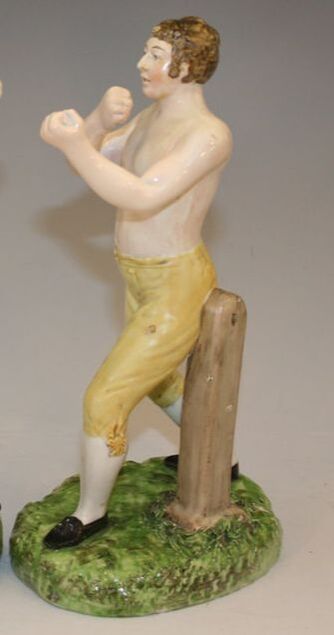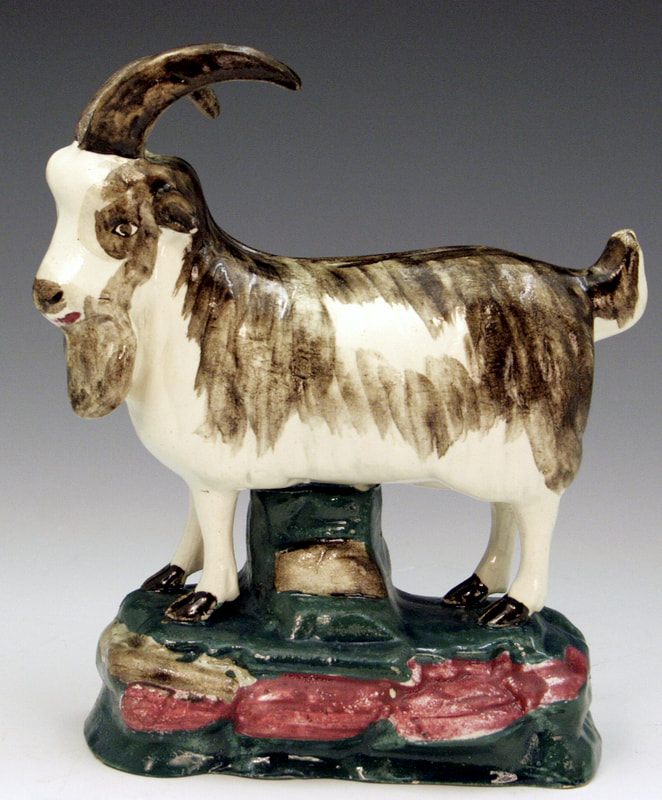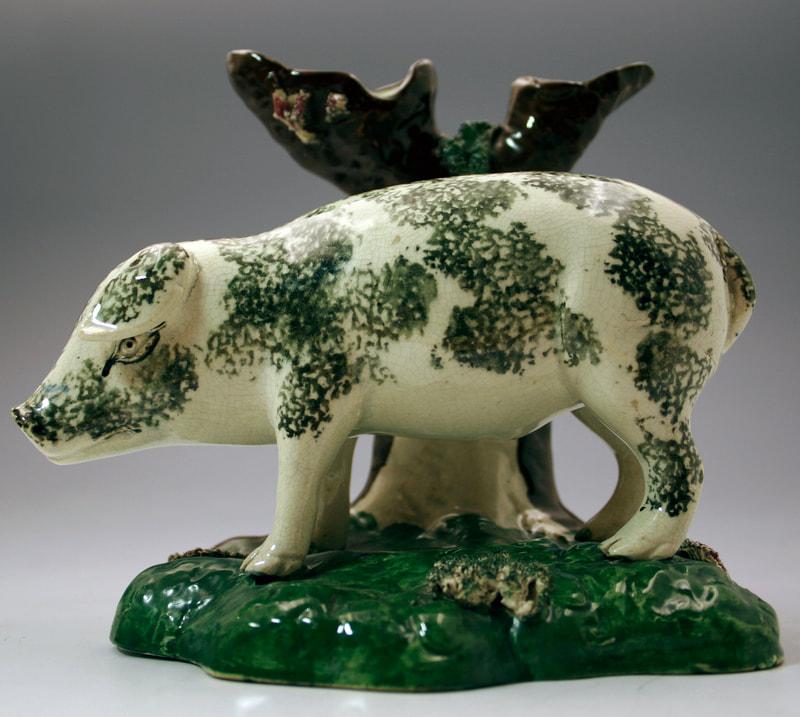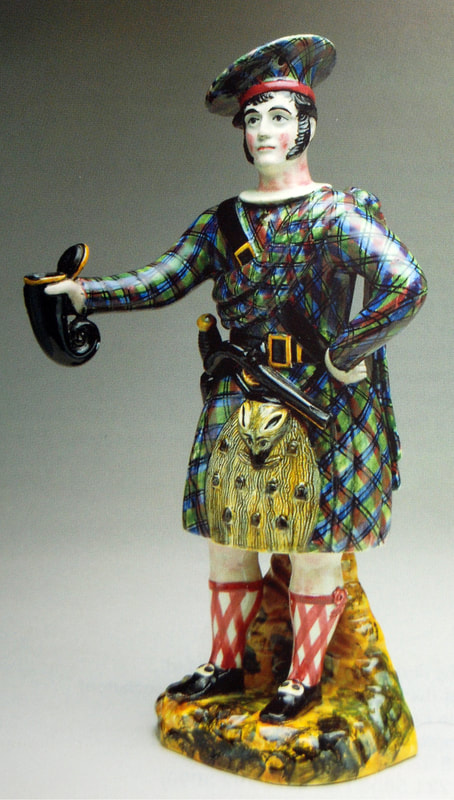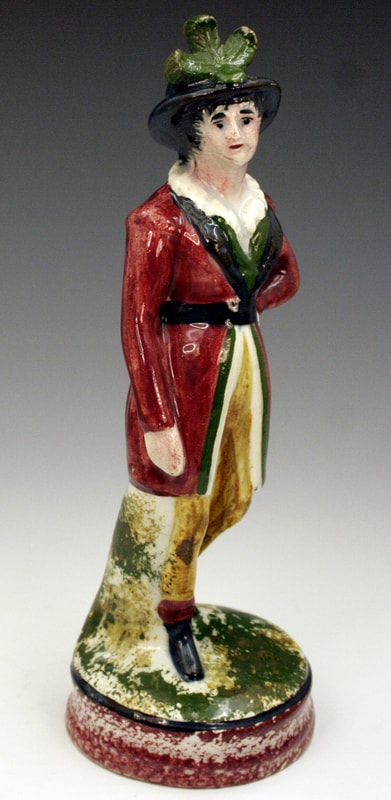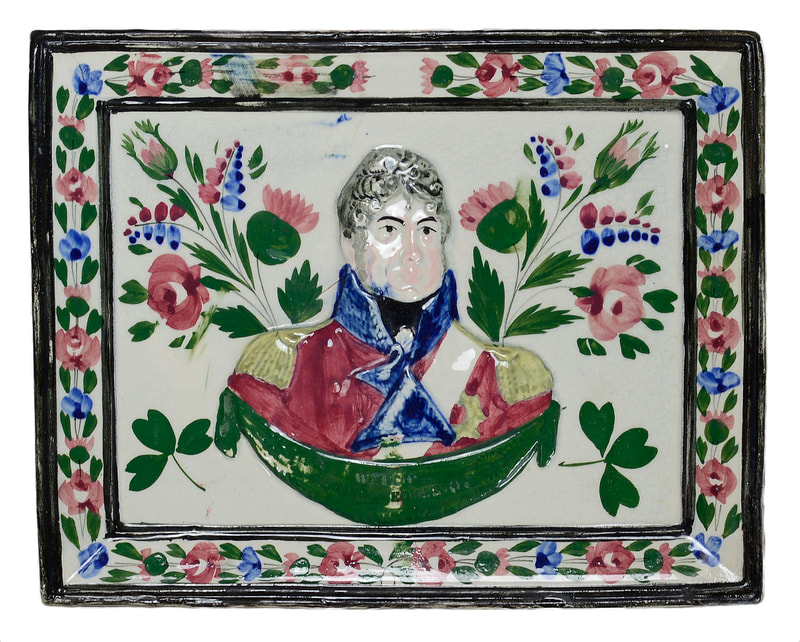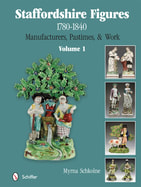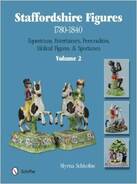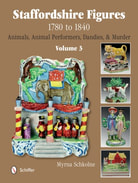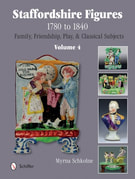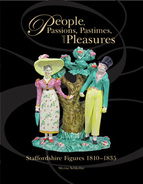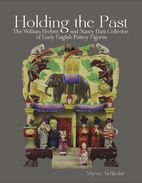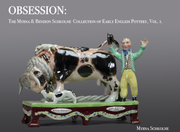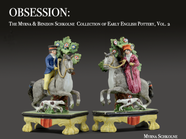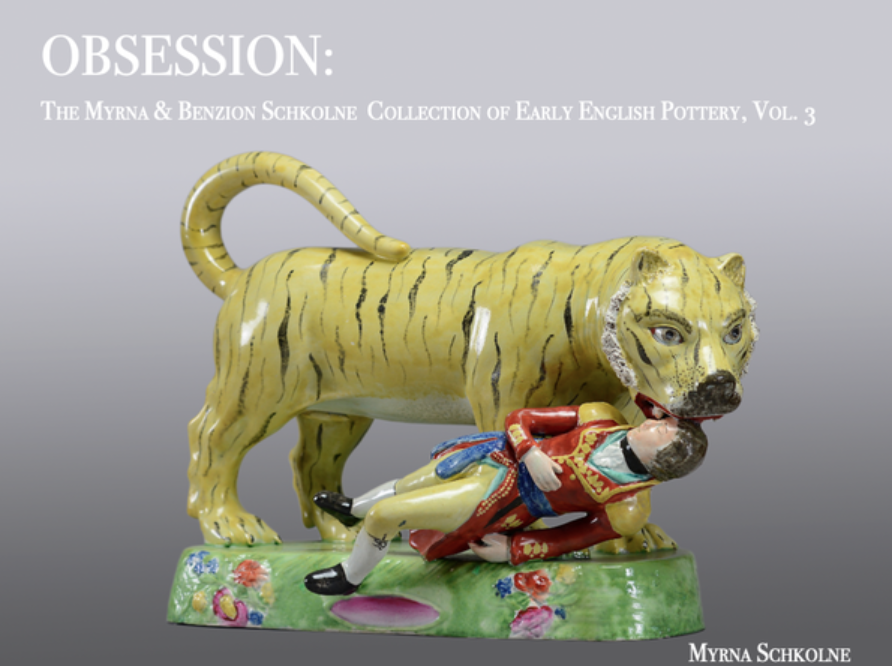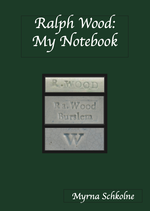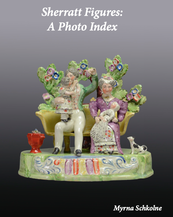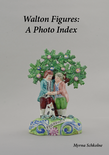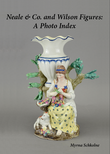From the mid-1700s on, Scottish pot banks produced figures, plaques, and useful wares often in much the same style as those made in Staffordshire. But one subject in particular was inspired by a Scottish presence. Scottish potters captured in clay their local fishwives, who were known for their robust physiques and striking garb.
The rare and unusual example third from the left jumped out at me because one just like it is currently is with Paul Vandekar at www,vandekar.com. This fishwife is shown selling her fish. Her creel containing her heavy load is at her feet, while a smaller basket placed atop displays the catch that is for sale.
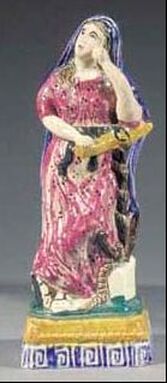
This figure of Hope is just like the one above. Again, it has that distinctive rope-trimmed border that confirms a Scottish origin. This time, the colors are quite different. That raspberry shade is one that occurs frequently on Scottish pottery, as does that green shade on the base.
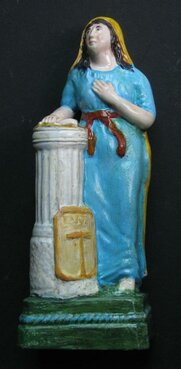
The figure of Faith has the same rope-trimmed Scottish base, but notice the very different color palette, which, I must admit, I find rather unappealing. The deep green is common on
Scottish pottery figures, but that sky blue (for want of a better term) is one that I think occurs only on figures made in Scotland.
- With the exception of the sky blue color, the colors that are typically Scottish were not exclusive to Scotland. Other pot banks in Staffordshire and in northeast England used them too, so be careful about jumping to conclusions based on color alone.
- There are, to my knowledge, no early figures with a Scottish maker's mark, so attribution becomes difficult. I have deliberately avoided banding about the names of the assorted pot banks because theories on attribution seem to be constantly evolving.
- The Scottish pot banks used both enamel colors and underglaze colors on their figures, and some figures were colored using both techniques. I often find it impossible to distinguish without handling the figure.
